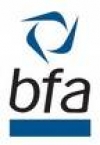Posted by: Admin Post on October 16, 2009
Author: John E. Berg and Ryan R. Palmer
Weathering the current economic storm requires clear, level-headed thinking and a strategic process for action.
Low consumer confidence, fickle consumer spending, unpredictable commodity costs, and tight credit markets are all causing distress throughout the franchise industry and injecting new stress into the franchisorfranchisee relationship. Faced with declining unit revenues and failing locations, franchisees have been looking to their franchisors and other creditors for help, and franchisors, perhaps more than ever, are being forced to consider creative options to help their franchisees survive one of the most challenging economic environments since the early 1930s.
Every distressed situation presents unique challenges for a franchisor, but the central question is almost always: “What should I do?” It’s a simple but important question, and answering it incorrectly could cause irreparable damage to your brand. Franchisors should consider the following steps before deciding how to address the issues presented by a struggling franchisee.
Know the Warning Signs
Depending on the size of your system, it may be difficult to determine whether your franchisees are in distress until it’s too late. Franchisors need to be constantly aware of the operational, relational, and financial aspects of their business, and they need to develop formalized processes to watch for the warning signs of distress in each of these categories.
Monitoring the operational aspects of a business is a “hands-on” and time-consuming undertaking, but it often provides franchisors with an early warning of problems ahead. Conduct unit inspections, investigate landlord, employee, and customer complaints, and get to the bottom of high employee and management turnover.
Franchisors aware of their franchisees’ relational issues may also catch problems before they erupt. Be aware of franchisees who are struggling to obtain permanent financing and those churning through lawyers and accountants. Cashon-delivery status with suppliers is a sure sign of a relational (and perhaps financial) issue.
Finally, develop systems to monitor your franchisees’ financial health. Obviously, franchisors should know immediately if a franchisee defaults on a royalty or advertising payment, but franchisors should also put in place mechanisms to enforce the financial reporting obligations in the franchise agreement. Whether on a monthly, quarterly, or annual basis, reviewing a franchisee’s financial statements and reports allows franchisors to determine whether a franchisee’s accounts payable are current and consistent with those of comparable franchisees and to determine whether debt service and lease obligations are likely to cause future distress.
Pinpoint the Issues (Don’t Forget to Look Inward)
Once a franchisor is aware of general distress, it should spend time to pinpoint its source. Determine whether the difficulties are being caused by factors unique to a specific franchisee, a specific franchised location, the franchisor, or a combination of these elements. Even though it’s sometimes painful, franchisors should conduct an inward-looking analysis to determine whether the system’s product offerings, supply systems, or brand and image or remodeling requirements are contributing to a franchisee’s distress. A review of the franchisee’s financial information should help you determine whether the debt service and lease obligations are at a sustainable level, and site visits and interviews with the franchisee will help you probe whether there are special circumstances that explain or mitigate the identified issues.
Develop a Financial Model
Develop a financial model that shows worst, expected, and best-case scenarios over a three to five-year period. Be sure to include necessary capital expenditures, possible rent reductions, and possible debt-service adjustments. Also consider the effects of delaying the dates of payment for products or services and analyze a franchisee’s general and administrative costs to ensure they’re in line with similarly situated franchisees. The best case scenario should produce a business that’s enticing to lenders and other third parties; the worst case scenario should be merely survivable by the franchisee. Because the franchisee is already struggling, you should use conservative estimates to produce realistic models.
Determine Whether to Act
Using the information gathered about a franchisee in the steps described above, a franchisor must now determine whether financial or other accommodations will provide a franchisee with sufficient shortterm relief to make the business successful in the long term. If the franchisor’s investigation shows that the issues derive from a bad location run by an uncommitted franchisee, any accommodations will likely just prolong the inevitable failure of the business. On the other hand, a qualified operator at a viable location suffering from burdensome debt service and high overhead costs may benefit from some form of intervention by the franchisor. In determining whether to act, franchisors should consider the importance of maintaining an outlet at the franchised location and the time investment necessary to rectify the situation. Such an analysis should take into account, among other things, the loss of revenue from closing the location and the risk of a competitor taking over the location.
Set the Action Plan
If you determine that assistance from the franchisor will benefit a franchisee and the franchise system, set an action plan. The plan could include offering franchisor financing packages, arranging for the relocation of franchised units, entering into management agreements or co-marketing agreements, conducting franchisor-assisted sales of franchised units, converting franchised units to company-owned units, or providing fee concessions or abatements or extensions of major remodeling requirements. The potential outcomes from an action plan should be grouped into three categories: preferred, acceptable, and unacceptable, and the parties should focus on the options most likely to produce acceptable and preferred results.
For a franchisor intent on preserving a franchise relationship with the franchisee, an action plan may initially consist of strategies for meeting operational or performance standards proven to provide the best return on investment. In the restaurant industry this may mean leveraging neglected dayparts; in a retail environment it may mean remodeling or refreshing the premises. Every franchised system is different, but identifying and implementing those items that will provide the fastest return on investment are crucial steps at this stage.
An action plan for a badly-distressed business (without time for turnaround based on operational or performance standards) may include “workout” options, and it likely represents the last best option before bankruptcy. A workout is a plan among a business owner and its key creditors regarding payment of debt obligations. It’s a plan premised on the idea that creditors of a failing but ultimately viable business will benefit in the long term by giving up something in the short term. Workouts can include forbearance agreements, which require creditors to refrain from pursuing remedies against the debtor for an agreed upon period of time or until the occurrence of an event. A forbearance agreement can allow a debtor to remain in business and pay down its debt over time, presumably when revenues have reached levels projected in the financial models discussed above. Franchisors should consult with their legal counsel to develop forbearance agreements that protect the brand’s integrity and address potential future issues, such as a bankruptcy filing by the franchisee.
Workouts can also include various exit strategies for franchisees. Perhaps the simplest of the exit scenarios is a mutual termination, an arrangement in which the franchisee may gain certain benefits from the franchisor in consideration for its swift termination of the franchise relationship and compliance with de-identification requirements and confidentiality and non-competition covenants. A mutual termination allows the franchisor to avoid the costly and often time-consuming task of unilaterally terminating the franchise agreement.
It may be worthwhile to consider an assignment and assumption of the business to another operator, or in some cases the franchisor itself. If the business is assigned to a new franchisee, the new operator would likely have to assume all or a portion of the previous franchisee’s liabilities, so the franchisor and other creditors would, in theory, have a means of collecting amounts owed. If the franchisor were to assume operation of the business, it could attempt to fix operational or other issues and refranchise the unit for a profit at some point in the future.
In some situations, the best hope for a franchisor (and other creditors) to collect amounts owed from a franchisee is to permit the franchisee to sell its units for fair market value. Clearly, if the unit is perceived as beyond repair, its fair-market value will not likely provide for the repayment of creditors, so this scenario is best used when a unit can be marketed based on its future potential or based on substandard performance traced to franchisee-specific operational issues.
Assuming the business isn’t suffering from incurable sales or revenue issues, a Chapter 11 bankruptcy may be the best course of action. A Chapter 7 filing or an assignment for the benefit of creditors may be appropriate in more dire situations. If a bankruptcy filing or an assignment for the benefit of creditors is a possibility, franchisors should consult with legal counsel regarding the impact of the automatic stay and other key bankruptcy issues affecting the franchisor.
Understand Financing and Lease Options
Franchisees and franchisors will both benefit from understanding the leasehold and credit environments. Both should be armed with a variety of suggestions or compromises that they can propose to creditors, a franchisee on behalf of itself and a franchisor as a means of developing a holistic workout plan for its franchisee (or, in other words, a plan that seeks concessions from all key creditors, not just the franchisor). In multi-tenant facilities, a franchisee may be the anchor tenant, and as a result, the landlord may offer significant incentives to keep the unit operating. Consider suggesting that the lease be renegotiated with attractive tenant improvement allowances for refreshing or remodeling the space. If the franchisee’s lender is a community or regional bank, suggest that the franchisee establish a deposit relationship and remind the bank of the jobs created by the franchised business, which could help the lender comply with its community reinvestment requirements.
Weathering the current economic storm requires clear, level-headed thinking and a process similar to the one outlined above. While there is no sure-fire solution to fixing a struggling franchised business, conducting a systematic analysis of the key parties and their key obligations will often lead to an efficient solution that’s good for the health of the franchisee, the franchisor, and the franchise system.
John E. Berg is a shareholder in the Corporate Finance practice group at Krass Monroe, P.A. He has significant experience in large workout transactions and restructuing borrowers' financial obligations. His practice includes evaluating and managing the tax aspects of complex financial transactions, including multi-tiered financing and complex capitalizations structures. He can be reached at 952-885-5999 or [email protected].
Ryan R. Palmer is a member of the Franchise Distribution and Intellectual Property practice group at Krass Monroe, P.A., where he focuses his practice on the multi-unit retail environment. His practice includes counseling new and established franchisors in the development and implementation of franchise and distribution systems and overseeing the frachise aspects of large mergers and acquisitions in the franchised indutries. He can be reached at 952-885-5999 or [email protected].
September 2009 Franchising World
Source: IFA








